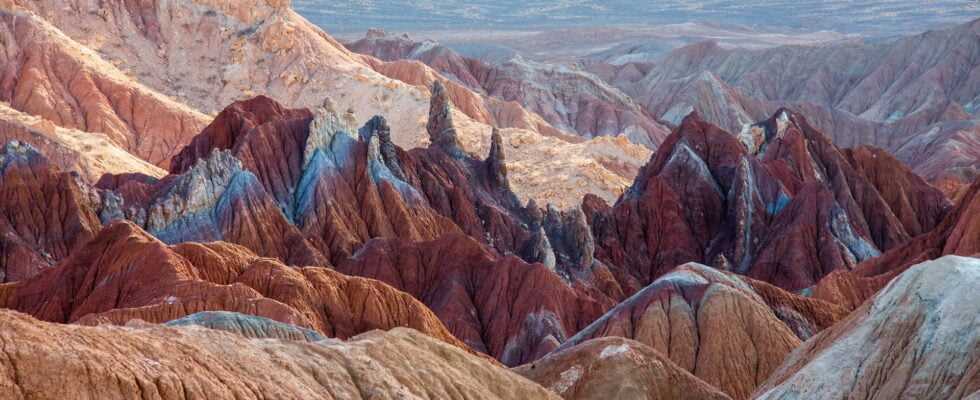It is hard to imagine that life can even exist at peak temperatures on the surface of 70.7 degrees Celsius. And yet there are sand foxes, scorpions and geckos in the Lut desert in southwestern Iran. A team led by Hossein Rajaei from the Natural History Museum in Stuttgart is researching which animals live there. As the biologist and colleagues now write in the journal “Journal of Zoological Systematics and Evolutionary Research”, the lizards feed on the endemic species Rhinogecko misonnei especially from insects that have come to the desert fringes from neighboring areas. So it is prey from outside the desert that ensures the survival of the geckos.
The scientists working with Rajaei examined the gastric tract of six spider geckos and genetically evaluated the contents. The researchers analyzed their samples using what is known as DNA metabarcoding. This procedure makes it possible to identify the genetic material of different living beings in a sample.
© Alamy / Ahmad Karimi (detail)
Spider gecko | A specimen of the lizard species Rhinogecko Misonnei in the Iranian desert of Lut.
In this way, the researchers found the gene traces of 94 different species that they could assign to specific genera. According to this, the geckos mainly ate insects, around 81 percent of which come from the neighboring areas of the desert. They also ate some spiders, which in turn belong to the native animals of the Lut desert. As the biologist Rajaei told Science News magazine, the unexpected diversity of prey shows that there is more life in the Lut desert than can be seen with the naked eye.
Some time ago, his working group found out that the ruffian foxes there feed on migratory birds. From the carrion of the birds. The flying animals probably perished while resting in the extremely inhospitable desert.
Dascht-e Lut extends over 166,000 square kilometers in southwest Iran. Due to the special landscape, UNESCO declared it a World Heritage Site in 2016. The sometimes bizarre rock formations are created by strong winds that carry sand with them and literally sand the surface.
